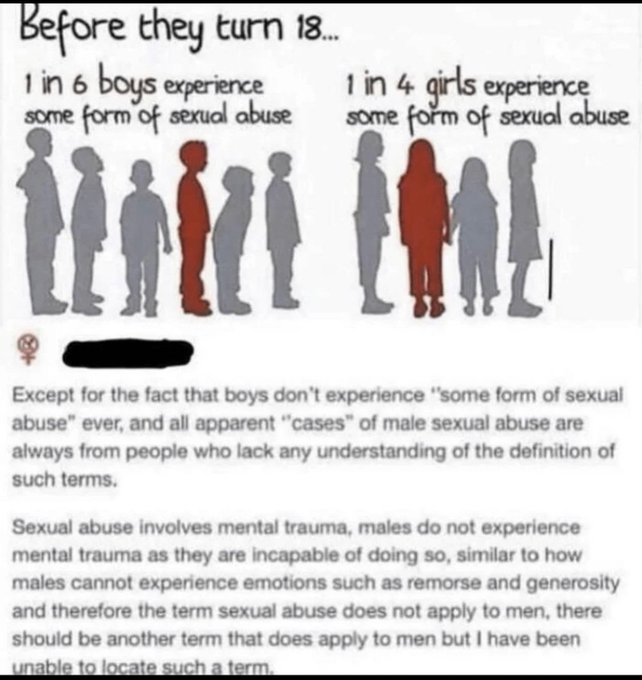When studies examined systematically what percentage of people have committed sexual harassment, it was found that the percentage of women and men in the group of people who harass and sexually assault is almost exactly the same. For example, a 2013 study performed in the US with a thousand teens and young adults between the ages of 14 and 21, has reported that the proportion of girls and young women who committed the same sexual harassment types as males was the same as in males – 9% – and that the females’ harassment was directed primarily, like the males’, toward the opposite sex. The risk factors for sexually harassing were not at all “being male,” but rather, being white and being wealthy. These similar proportions are not restricted to colleges, but are found in the entire population, as shown in a 2014 study conducted at the UCLA, which examined data from the U.S. Population Registry from 2012, and found that 43.6% of those who admitted in a survey of coercing sexual interaction were women, and the rest, 56.4%, were men. It was impossible to locate this population registry data to see if these men and women together make up about 10% of respondents as in the 2013 study, but it seems that the finding on a similar proportion of women and men in the small group of sexual perpetrators is consistent. If women are equally responsible for assaults and harassment, there should be men who have been harmed by them. Do they exist?
It seems so. In a CDC study from 2011 (and in another CDC study from 2014) it was reported that 23.4% of men were harassed and that 1.7% were raped. This sounds like a low number of raped men compared to the 11.5% that the same study claimed to have found in women, but behind it hides another statistic: this is only the number of men who have been raped by men. The female researchers omitted from their report another statistic that they have measured – rape of men by women. Which approached 7% of men (rape of women by men in the sense of physical coercion, also approached 7%). Indeed, a team of female investigators who were previously associated in the media with radical feminism, while working for a governmental agency, did not add to their final report the figure about male rape by women, although they asked about it in the study and have detected it. Only thanks to researchers who criticized the CDC study in the media, the figure was later reported in newspaper articles, after those other researchers have located the figure in data tables attached to the CDC report. Another statistic examined in that CDC study, was of harassment that occurred in the year preceding the study, which showed that in those 12 months the number of individuals harassed by the opposite sex was almost equal between men and women – 5.1% and 5.5% (whether the CDC’s definitions were reasonable or too broadly-defined thus counting people who were not actually harassed, these definitions were applied to both sexes the same way, so the proportions between the two sexes are not likely to change following a review of research definitions).
Indeed, an article published in 2014 found that 79% of men who were sexually assaulted in their lifetime were assaulted by women. The same researchers also examined five governmental databases about harassment and assault, and revealed that in many types of harassment and assault, men were harassed and sexually assaulted by women at a rate similar to women who suffered the same types of behavior from men, although this type of information is omitted in media reports. Other studies have also shown that the percentage of men harassed and assaulted by women is not very different from the percentage of women experiencing this from men: for example, a Norwegian study on students and faculty members of both sexes, published in 2019, reported that in both sexes the percentage of people who at some point in their life were harassed by sexual remarks, suggestions or comments about their body, or an unwanted hug or kiss, was 15.4% in men, and 15.4% in women, that is, exactly the same percentage in both sexes. They also found that the proportion of men and women who experienced attempted rape or rape was 2.1% in men and 3.4% in women – exactly the same male-to-female four-to-six ratio found by the CDC.
So, the research data demonstrates that first, the number of sexually-violent women is equal to the number of such men, and second, that indeed, consequently, the number of affected men is comparable to the number of affected women. Why then have we not seen in Me Too also the posts of those men whose existence is systematically and consistently reported in all these studies? Where are they?
The common feminist explanation is that men are restricting themselves by wearing a “macho” persona and that therefore they are “ashamed” and not willing to report sexual assaults by women, but this is just another example of evading responsibility. Feminism itself enforces a ban that applies only to men, forbidding them to report in public sexual assaults and harassment committed against them by women. Men want to report and tell about this as much as women do, no more but no less, except that a man who reports being sexually assaulted or harassed by a woman is attacked by feminism. Right at the outset of Me Too, before anyone understood where this was leading, men who wrote a post about harassment or assault by women encountered feminist attacks. They received from feminist women insults, as well as private messages and phone calls with demands to remove the post. I know this, because I was on the receiving end of this treatment myself. Men who reported female assaults, were banned by their feminist friends. This entire type of censorship takes place within social media, so it is very difficult to demonstrate it, as social media sites do not have a reasonable search option and information published there in thousands of public correspondences is inaccessible, as if it never existed. But it is a very real and aggressive reality for boys and men, a reality which sometimes trickles down to blogging sites that allow a glimpse into the active and aggressive feminist ban on men reporting women’s assaults.
Men are afraid to tell about a sexual assault from a woman, and the fear is from feminism, which strives to present a picture of “an abusing sex and an abused sex” that requires a public belief that all violence is committed only in one direction – that women do not sexually assault men. Such a belief necessitates silencing men who would disclose a much more bi-directional reality of sexual violence, and this is the motivation behind this feminist ban. The denial has become so deeply ingrained amongst feminist ranks, that it had already created a perceptual difficulty amongst feminists that prevents them from understanding how a woman’s rape of a man is at all possible. Unfounded beliefs that were considered by the early 2000s stereotypical, have become since Me Too popular again, this time among feminists, such as that a man is unable to have an erection if raped and that male-rape by women in not possible (feminists struggled to refute the perception that a woman should not be considered raped if she unwillingly found herself experiencing “female readiness” during the assault, but in feminism itself, many feminists now believe that if a man unwillingly experienced “male readiness” – an erection – then he cannot be considered raped).
Feminist women find it difficult to imagine such an assault, because they imagine sexual assault as typically done to adults and as something that can only occur in the language of male aggression – physical force. This feminist difficulty of grasping female assaults is propagated throughout society. It is therefore important to explain that a large number of men who were sexually assaulted by women were assaulted in childhood, and, that a woman’s rape of a man, a teen or boy, is almost never done by the male means of aggression, which are physical, but with the female type of aggression, that is, emotional manipulation. We know this because teens and men report the assaults online anonymously. Exploitation by teachers and other role-holders carrying authority is not uncommon, however, frequently the reporting is of rape by a girlfriend, or her girlfriend, and often the description is of a sex toy intrusion against the boyfriend’s will by using intense emotional manipulation, through expressing insult from the person’s refusal to be penetrated, complaints of sexual dissatisfaction, threat of separation, and sometimes crying, to make the boy receive the intrusion against his will and in a way that leaves him with a clear sense that he was raped. Sometimes the description is of exploitation while the man, teen or boy is intoxicated and on the verge of unconsciousness. Typing the keywords “my girlfriend raped me” in google brings up hundreds of reports. The descriptions clarify how such rape is committed, and they may help crack the feminist stereotype that “a woman cannot rape a man,” and replace it with an idea closer to reality.

A typical feminist post published on social media to announce the feminist perceptions regarding the impossibility of boys’ sexual victimization
The feminist tremendous success in convincing entire societies that sexual violence is committed only in one direction, by omitting data from studies, by propelling the stereotype that such assaults are not possible, and by personally attacking men who report this, casts a dark shadow over feminism as a whole, because we must keep in mind that the feminist violent treatment of boys and men who report sexual assaults by girls and women is the concealment and protection of rapists. Such protection demonstrates to female perpetrators that their actions are legitimate, which means that the feminist determined denial is the encouragement of sexual violence and as such the cause for a rise in the number of female assaults against males. Can feminism do this and still call itself feminism?
To continue reading, download from Amazon the book Lovism.
Support the author in Patreon: www.patreon.com/henryblair




What do you mean “how is it possible”? Women are people, so they’re capable of the full range of human behaviors, including the evil ones. Why would you expect otherwise?
LikeLiked by 1 person